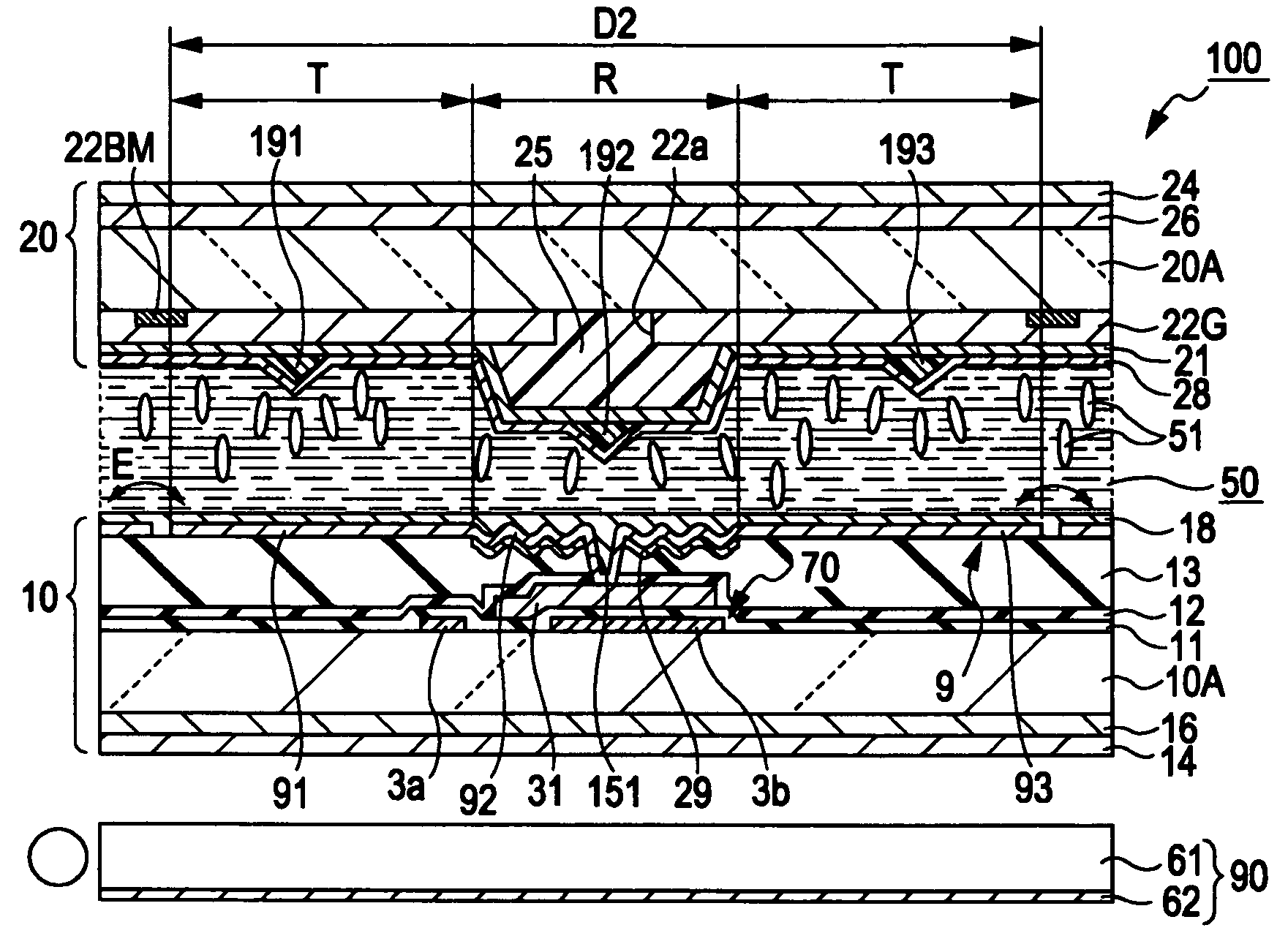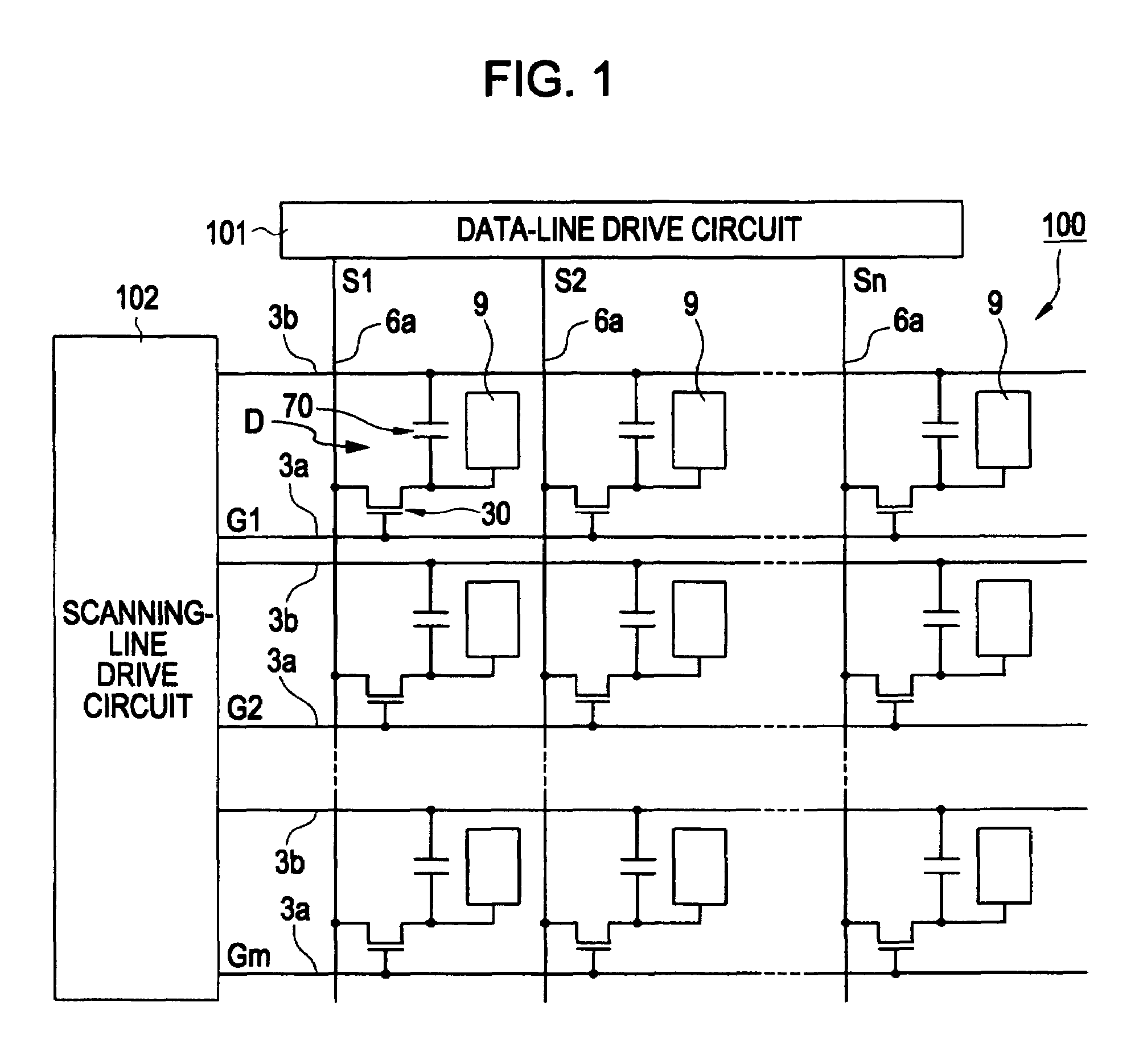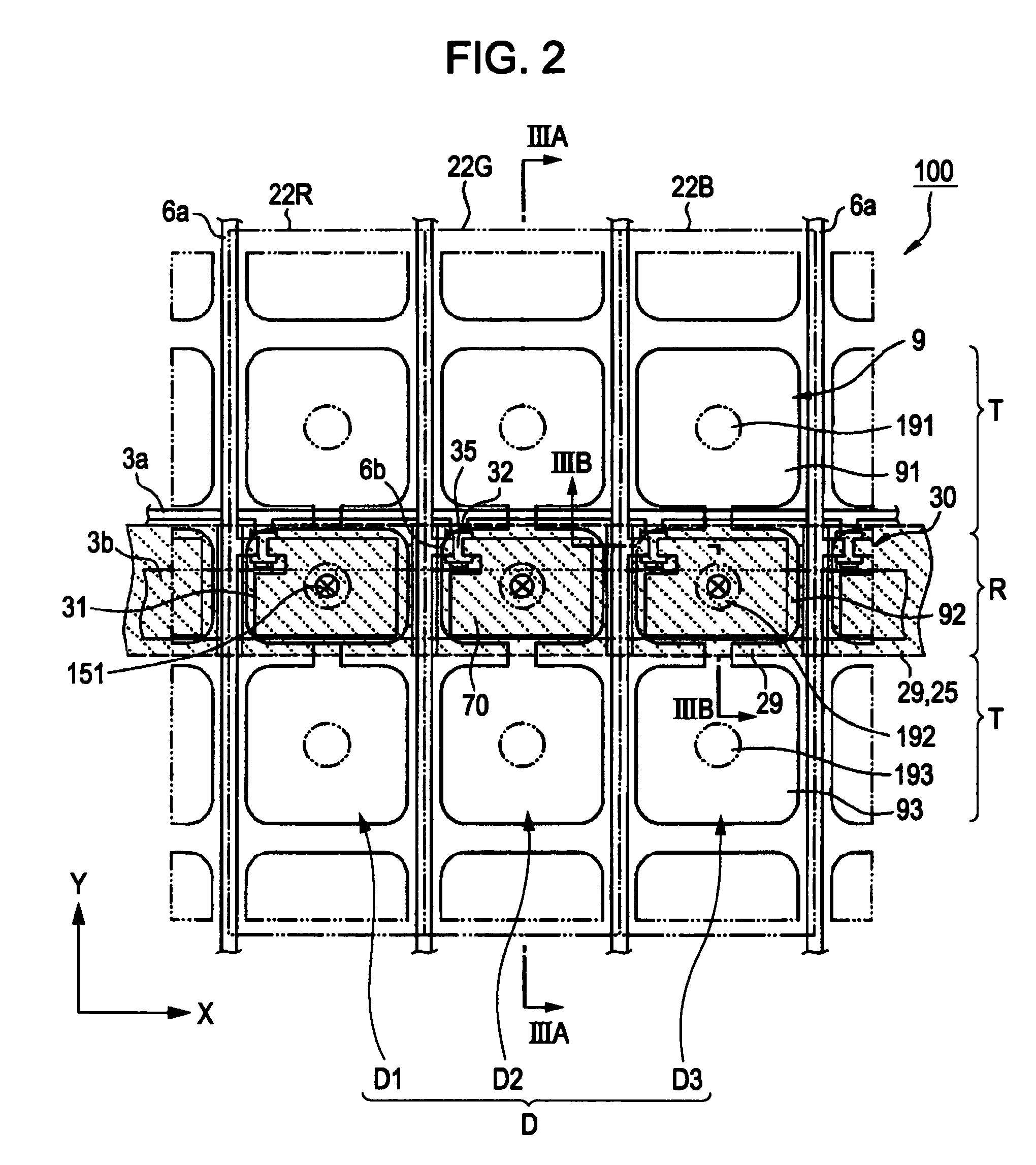Liquid crystal device and electronic apparatus
a liquid crystal device and electronic equipment technology, applied in non-linear optics, instruments, optics, etc., can solve the problems of misalignment between transmisive display regions and reflective display regions, grainy, stain-like irregularities, etc., to eliminate the difference in retardation, high brightness, and high contrast
- Summary
- Abstract
- Description
- Claims
- Application Information
AI Technical Summary
Benefits of technology
Problems solved by technology
Method used
Image
Examples
first embodiment
[0033]A liquid crystal device according to a first embodiment of the invention will now be described with reference to the drawings. The liquid crystal device is an active-matrix liquid crystal device of vertically aligned nematic (VAN) mode, including a liquid crystal with negative dielectric anisotropy which is aligned perpendicularly to the surfaces of substrates. The alignment of the liquid crystal is controlled by applying an electric field thereto to perform image display. This liquid crystal device is a transflective liquid crystal device including subpixels having reflective and transmissive display regions. The liquid crystal device has red (R), green (G), and blue (B) color filters (coloring layers) provided on one of the substrates to enable color display. Each pixel includes three subpixels that emit R light, G light, and B light. In the present specification, the term “subpixel” refers to the minimum display unit, and the term “pixel” refers to a display region includin...
second embodiment
[0062]A liquid crystal device according to a second embodiment of the invention will now be described with reference to FIGS. 5, 6, 7A, and 7B. FIG. 5 is a circuit diagram of the liquid crystal device according to this embodiment. FIG. 6 is a plan view of three subpixels included in any pixel of the liquid crystal device according to this embodiment. FIGS. 7A and 7B are partial sectional views taken along lines VIIA-VIIA and VIIB-VIIB, respectively, in FIG. 6. In FIGS. 5, 6, 7A, and 7B, components similar to those of the liquid crystal device 100 shown in FIGS. 1 to 4 are indicated by the same reference numerals, and the detailed description thereof will be omitted.
[0063]A liquid crystal device 200 according to this embodiment is an active-matrix liquid crystal device including TFDs (two-terminal nonlinear elements) 41. The liquid crystal device 200, as well as the liquid crystal device 100 according to the first embodiment, is a transflective liquid crystal device having a multigap...
third embodiment
[0079]Next, a third embodiment of the invention will be described below with reference to FIG. 8. A liquid crystal device 300 shown in FIG. 8 is a modification of the liquid crystal device 200 according to the second embodiment shown in FIGS. 5, 6, 7A, and 7B. The liquid crystal device 300 differs from the liquid crystal device 200 only in the alignment control members used for controlling the alignment of the liquid crystal layer 50. In FIG. 8, components similar to those of the liquid crystal device 200 according to the second embodiment are indicated by the same reference numerals, and the detailed description thereof will be omitted.
[0080]Referring to FIG. 8, electrode slits 491 to 493 are formed in the counter electrode 3 disposed on the counter substrate 120 of the liquid crystal device 300 by partially removing the counter substrate 120. The electrode slits 491 to 493 are substantially circular in plan view and function to control the alignment of the liquid crystal layer 50....
PUM
| Property | Measurement | Unit |
|---|---|---|
| thickness | aaaaa | aaaaa |
| thickness | aaaaa | aaaaa |
| diameter | aaaaa | aaaaa |
Abstract
Description
Claims
Application Information
 Login to View More
Login to View More - R&D
- Intellectual Property
- Life Sciences
- Materials
- Tech Scout
- Unparalleled Data Quality
- Higher Quality Content
- 60% Fewer Hallucinations
Browse by: Latest US Patents, China's latest patents, Technical Efficacy Thesaurus, Application Domain, Technology Topic, Popular Technical Reports.
© 2025 PatSnap. All rights reserved.Legal|Privacy policy|Modern Slavery Act Transparency Statement|Sitemap|About US| Contact US: help@patsnap.com



